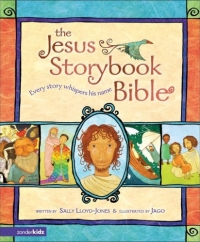I am remiss to say I don’t keep up with all my friend’s blogs as often as I should. And I confess I have not been reading my friend Nathan Pitchford’s recent Studies in the Gospel of John. But I have been blessed by reading his most recent study on chapter 17. It is a long post, but every inch of it is worth a spiritual mile. It is rich and precious food for your soul.
The post reminded me of the richness of our salvation and the Glory of our Savior, as it explored some of the riches of John 17. And as Nathan had promised (in a comment on my last post), his post touched on the ultimate reasons God had for creating man. What I want to focus on in this post, is how Jesus fulfills the rich imagery of the OT sacrificial system.
I am sure he delves deeper into an explanation of this in his prior posts, but let me quote Nathan’s first paragraph which states how John’s Gospel presents Jesus as the Fulfillment of the OT Tabernacle (think John 1:14 “dwelt” = “tabernacled”).
During the course of our journey through the gospel of John, we have also taken a journey through the tabernacle, and we have seen how all of its imagery is fulfilled in Jesus. He is the Lamb of God, offered upon the brazen altar at the entrance to the courtyard. He is the laver by which the priests were cleansed, and in him is the water of everlasting life. He is the table of the bread of the presence, nourishing those who eat of him with the true life of fellowship with God. He is the candlestick, the tabernacle’s only source of light. And now, just before he offers himself up for our sins, we see that he is likewise the fulfillment of the symbolism in the altar of incense.
The post on chapter 17 goes on to detail how Christ was both the Sacrifice (offered on the brazen altar for the sins of the people) and the High Priest (who would take of the blood of that altar and offer it before the LORD, at times on the altar of incense). We do have a full salvation, as Jesus our Great High Priest can “save to the uttermost” all who come to Him in faith. And as the prayer of Jesus reminds us, God is sure to preserve and keep His own people perfectly.
Before I bow out, and ask you to read Nathan’s post, let me quote what Nathan wrote concerning the importance of the prayer in John 17 to John’s Gospel as a whole.
…The fact that all of Jesus’ specific requests, as to what precisely his imminent death and resurrection should accomplish, are things that John’s gospel has emphasized, tells us that John must have considered this prayer so important that he intentionally designed his gospel account around fleshing out the truths which he had heard in Jesus’ prayer. This chapter is not the summary of John’s gospel, it is the fountain and foundation for everything that John wrote. Really, it would be hard to overestimate the importance of this prayer: who would know better what specific effects to look for from the most important event of all history (indeed, the event for which all of history was designed) than the one who actually accomplished this all-important event of redemption through his sacrificial death on the cross? Do we want to know what God intended for Christ’s death and resurrection to accomplish? We have no further to look than right here.
Allright, I don’t think there is any more enticement needed for you to go read Nathan’s post. Read it today on Sunday, if you can. Read it and rejoice in our Savior.
